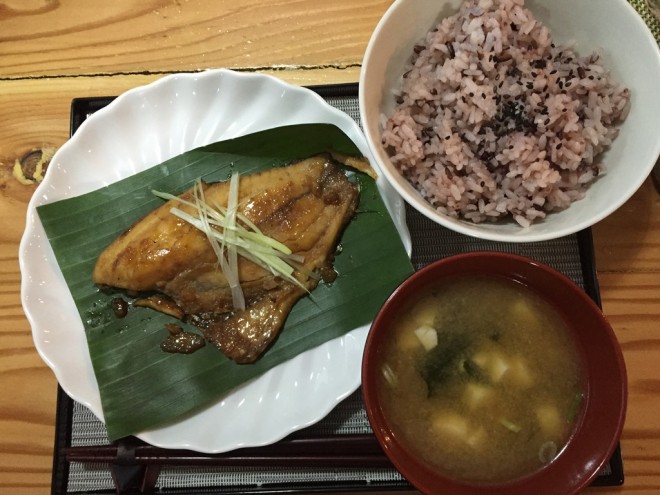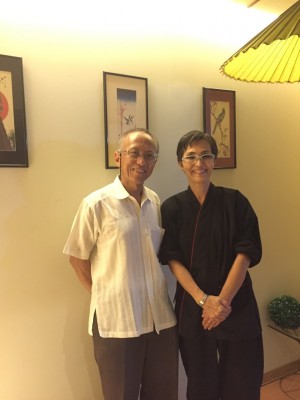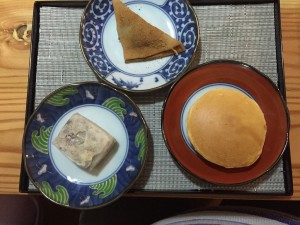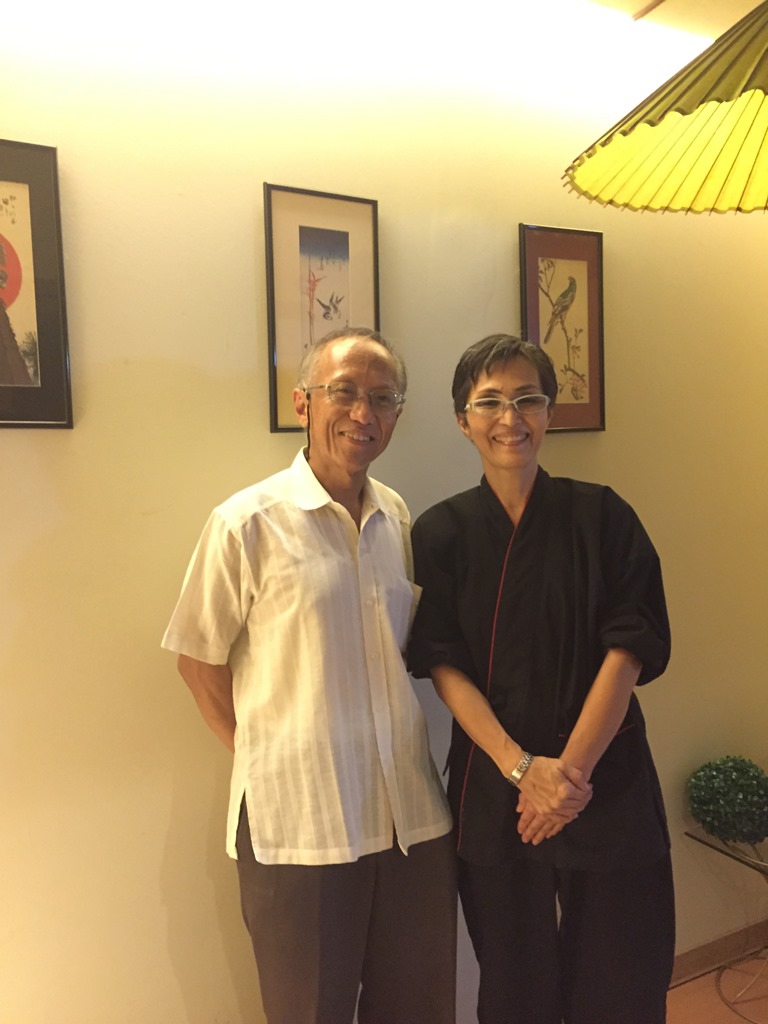
How about a Japanese merienda? The invitation was from Rene Guatlo who studied in Japan and works as a business interpreter to companies, among other things.
He was going to interpret the dishes as well as the chef’s words. But Non Iwamoto speaks English (she lived in the United States) and knows basic Tagalog so that her pangit is accompanied by the appropriate facial expression.
The venue is called Zaan, a Japanese tea house in Quezon City. Iwamoto’s partner is Antonio Fernandez, who, like Guatlo, studied and worked in Japan. The mild-mannered Fernandez, in contrast to the voluble Iwamoto, came back home with his family.
The merienda extended to dinner as Iwamoto kept on serving almost everything in the menu. But she emphasized that she’s not a chef, just a housewife. The offerings indeed remind one of home cooking.
There was sukiyaki rice but she didn’t want to call it gyudon, which is how most Pinoys call it.
The simple main dish menu lists chicken, fish and pork cooked different ways. Iwamoto chose teriyaki tilapia and indicated the fish comes from Batangas.

The other ways with the main ingredient are tatsuta, or fried, and miso, meaning grilling after being marinated in miso itself. Pork is cooked with a sweet ginger sauce (shogayaki). Rice and miso soup are ordered separately. The whole meal costs P250.
The rice is interesting because it is a mix of white and black grains. While Iwamoto’s white rice is Japanese, she buys organic black rice from local producers. While talking about rice, she came in with three pieces of onigiri, molded rice in triangular shape with different fillings. One had salmon marinated beforehand in salt and then grilled.
The second had tamago, or Japanese omelet, while the third had tuna in soy sauce with shiitake.
Through all that, Iwamoto stressed that the quality of ingredients makes a difference. She makes sure there is no alcohol in the soy sauce (Kikkoman) so there won’t be fermentation once you open the bottle.
The best practice, however, is to keep soy sauce refrigerated to halt the fermentation and retain the flavor. That is probably why, Iwamoto said, one of the diners commented how different her teriyaki sauce is.
We also had cold soba, the buckwheat noodles done by a Japanese chef in Manila.
Another noodle made its appearance, pork udon, the fat noodles so slippery we felt inept using our chopsticks.

Japanese ‘kakanin’
What we were supposed to have for merienda, the Japanese kakanin dessert, or wagashi, came after the main meal. First was mizu manshu, a covering made of kuzu (arrowroot) starch holding dried mangoes inside instead of the usual red bean paste. Red beans once more were stuffed in a trio of wagashi—yatsuhashi (triangular wrapper made of soy flour), rectangular kintsuba (covering of rice flour) and the rounded dori yaki (two pancakes).
But two cold desserts, made of homemade ice cream, also arrived. Vanilla was topped with matcha (powdered green tea) and red bean paste. There was chocolate topped with melted chocolate. Now the last ingredient is a specialty of the house as well.
The brand TsokoFino was familiar and we tasted several chocolate candy variants. The product was conceived when Japanese expats and tourists were looking for gifts to bring to family and friends in Japan, Iwamoto said. She learned how to make chocolates using Davao cacao, and pili by watching YouTube videos.
She also made her own pili products—plain, salted and honey-coated—and gave it a clever name, Pilifino. Her latest is the Kapefino, which has coffee beans covered in chocolate.
Tea was served, including the genmaicha, or tea with roasted rice. Iwamoto enjoyed conducting a tea ceremony, explaining each step and meaning, and what a guest is expected to do.
We were gifted with matcha, a fitting end to the meal.
Zaan is at G/F, Norfil Foundation Bldg., 16 Mother Ignacia Ave. cor. Don Roces Ave., Quezon City; tel. 4128465
E-mail [email protected]









































